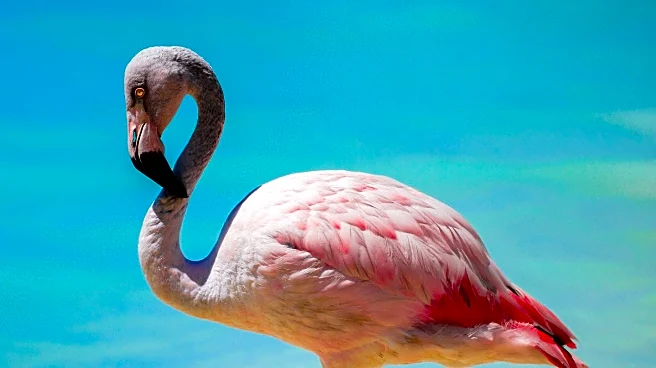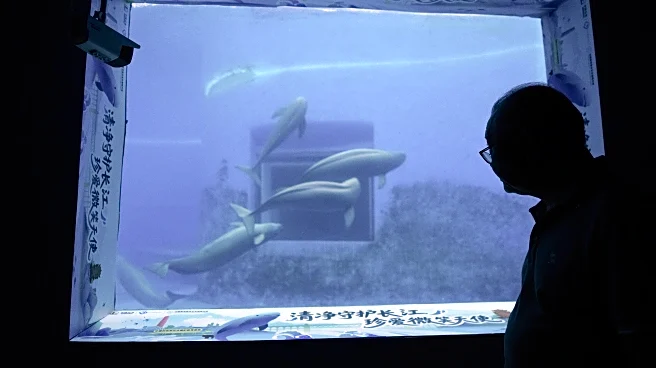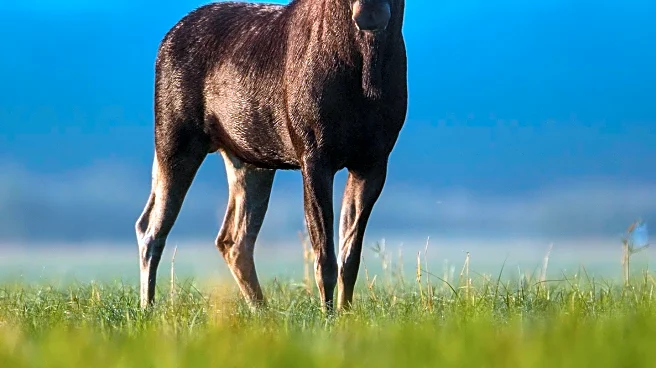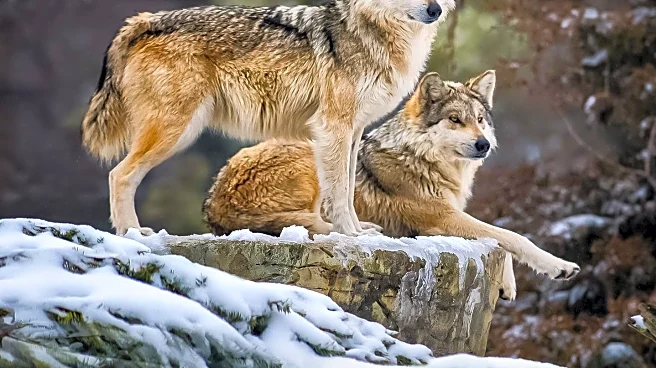What's Happening?
A Chilean flamingo chick has taken its first steps at the Royal Zoological Society of Scotland (RZSS), marking a significant milestone in the zoo's breeding program. The chick, which hatched on September 4, 2025, is the first of its kind to be born at the zoo in a decade. The young flamingo is under the watchful eyes of its parents as it begins to explore its surroundings. At birth, flamingo chicks have straight beaks, which will develop the characteristic downward curve in the coming weeks. The chick's soft white down will gradually turn pink as pigments from its diet accumulate over time. The Chilean flamingo is classified as Near Threatened on the IUCN Red List, facing threats from habitat loss due to mining, water diversion, pollution, and human disturbances such as unregulated tourism and egg collection.
Why It's Important?
The hatching of the Chilean flamingo chick is a positive development for conservation efforts, as the species is currently listed as Near Threatened. The successful breeding at the RZSS highlights the importance of zoos in preserving species that face environmental challenges. This event underscores the role of zoos in educating the public about conservation and the threats faced by wildlife. The chick's birth may inspire further efforts to protect flamingos and their habitats, potentially influencing policy decisions regarding environmental conservation. The zoo's achievement also contributes to the global understanding of flamingo breeding and development, which can aid in future conservation strategies.
What's Next?
The newly hatched chick will continue to be monitored closely by the zoo staff as it grows and develops. The RZSS may use this opportunity to raise awareness about the conservation needs of the Chilean flamingo and other threatened species. As the chick matures, it will become part of the zoo's flamingo flock, joining older residents like Shrimpy, Louis, and Rio. The zoo may also engage in further breeding efforts to bolster the flamingo population and contribute to the species' long-term survival. Additionally, the zoo might collaborate with other conservation organizations to address the broader environmental threats faced by flamingos.
Beyond the Headlines
The birth of the flamingo chick at the RZSS highlights the ethical considerations of wildlife conservation in captivity. While zoos play a crucial role in species preservation, they must balance the needs of individual animals with broader conservation goals. The event also raises questions about the impact of human activities on wildlife and the importance of sustainable practices to mitigate these effects. Long-term, the successful breeding of flamingos in captivity could lead to increased public interest in conservation and support for policies that protect natural habitats.















